- Home
- Gerald Durrell
Two in the Bush Page 14
Two in the Bush Read online
Page 14
To me the whole story was one of the most gloriously quixotic things I had ever heard. Humanity being torn asunder by the most terrible war in history, and in the middle of it Churchill, with his cigar, trenchantly demanding a platypus (of all things), and on the other side of the world David carefully and patiently training a young platypus and preparing it for the long voyage through submarine-infested waters. What a pity the story did not have a happy ending. But, even so, what a magnificently idiotic thing to do at that time. I doubt whether Hitler, even in his saner moments, would have ever had the delightful eccentricity of mind to ask for a duck-billed platypus in the middle of the war.
After three days spent filming in the charming company of David and his wife, we reluctantly had to pack up our gear and move down south again to Melbourne. The Wildlife Department there had organised a bear hunt for us which we did not want to miss, and on the way down through New South Wales we hoped to see the mallee-fowl, one of Australia’s more incredible birds. So we said goodbye to David and his wife and, leaving his charming sanctuary started on the long drive down to Melbourne.
Our first landfall was the small town of Griffiths in the centre of New South Wales. Near the town lay a fair-sized area of Mallee country, and it was here we hoped to see the mallee-fowl. At Griffiths we were met by Bevan Bowan of CSTRO (the Commonwealth Scientific and Industrial Research Organization). Under Harry Frith, the director of the Wildlife Survey section of this organisation, Bevan had been helping in a study of the breeding habits and ecology of the mallee-fowl, and so he was to act as our guide and adviser.
Mallee scrub consists of a small species of eucalyptus between six and twenty feet high, and in places the trees grow very close together, their branches entwining and forming a continuous canopy. Although at first sight the Mallee scrub looks dead, grey, desiccated and devoid of life, it is, in reality, one of the most interesting types of country to be found in Australia, for many species of insect and bird have adapted themselves to this somewhat harsh environment and are found nowhere else. As many isolated groups of islands in the world (the Galapagos for example) have evolved their own unique species, so the Mallee scrub, spread like a string of islands over the continent, has evolved its own special fauna; but without doubt the most interesting species to inhabit the Mallee scrub is the mallee-fowl – a handsome, turkey-sized bird that (to borrow Harry Frith’s description) builds an incubator. Unfortunately, it was not the breeding season when Bevan took us out to the Mallee scrub, but we were lucky enough to see both the incubator and its owners.
The grey-green Mallee we drove through was hot, silent and apparently lifeless. After we had driven some little distance into the scrub, Bevan pulled up and said that we would go the rest of the way on foot, as this would give us a better chance of seeing a mallee-fowl if there were any about. It was during this short walk that I discovered that the Mallee is not as deserted and lifeless as it appears: bronze-winged pigeons, their wings purring among the leaves, took frantic flights as we approached; tiny, slim brown lizards with golden eyes glided among the fallen leaves under our feet, and turning over a rotten log I found a small, black and extremely malevolent scorpion crouching with a misanthropic air. Digging my hand into the earth underneath the log I dredged up two extraordinary little creatures: at first sight they looked like golden snakes, some five inches long and as slender as a matchstick; it was only by looking at them closely that you noticed the four frail, rudimentary legs which fitted in grooves in the skin alongside the body. When they moved these lizards did not use their legs at all, but kept them held in to the side of their bodies and progressed as a snake does. I got quite enthusiastic over my find, but Chris was champing at the bit and eager to get to grips with the mallee-fowl, so I reluctantly returned the lizards to their earthy bed and we moved on.
Presently we came to a slight clearing and in the centre of it was what appeared to be a crater made by a small but vigorous bomb. The hole itself was the circumference of a small dustbin, but the earth had been thrown up around it in a wall measuring some twelve feet across. This, Bevan explained, was the incubator, and he went on to explain all the mysteries of these strange earthworks. In the winter time the cock mallee-fowl (sometimes aided by a hen) digs out this enormous crater and then he fills the hole in the middle with rotting vegetation and covers it carefully with sand. The rain and the sun do their work, the vegetation ferments, and soon the temperature in the interior of the incubator rises. Then he uncovers the nest and the females come and lay their eggs, arranging them in layers in the vegetation, big end up; the cock then carefully covers them up with sand. Now if the malee-fowl was a reptile, that would be the end of the job: he would simply go away and leave the eggs to be hatched out by the heat of the sun, but the mallee-fowl is more particular about his eggs than the average reptile, and he likes them kept at a steady ninety-five degrees. On the face of it you might think this was an impossible task for a bird, but the mallee-fowl manages very successfully. Either his tongue or the soft membrane inside his beak (no one is quite sure which as yet) acts as a built-in thermometer and with it he can gauge the temperature in the nest with incredible accuracy. So, day after day, he tends the nest, plunging his open beak into the sand to judge the heat, and removing or adding more material as the temperature rises or falls; daily, for six or seven months, the bird watches his nest, making sure that the precious eggs are neither chilled nor cooked. His devotion to his task is extraordinary. If rain clouds appear and a storm seems to be threatening, the mallee-fowl will run to his nest and frantically pile the sand in a cone over the nest chamber, thus providing a sort of ‘roof’ off which the rain can run. Attack the nest with a shovel and try to uncover the eggs, and again the cock arrives at the double, and so great is his anxiety that he will stand next to you and shovel the sand back into the nest with his feet as fast as you uncover it. Eventually, all the bird’s hard work is rewarded and the eggs hatch, but, once having escaped from the egg, the chick finds itself buried under some two feet of hot sand and has to dig its way out. This is a slow and laborious process and can take the chick anything from two to fifteen hours before he breaks through the surface. Once out of the mound the chick is extremely weak and helpless and it generally staggers away from the mound to the nearest patch of shade, where it rests and gains strength. Within two hours it is strong enough to run quite fast, and within twenty-four hours it can fly.
Soon, when we had finished examining the mound, Bevan led us deeper into the Mallee scrub in search of the birds. We quartered the scrub for about an hour without success, and were just about to give up when Bevan came to a sudden standstill and pointed. Ahead of us, in a small clearing, stood two mallee-fowl, regarding us suspiciously. Basically they were a soft and lovely shade of pinky-grey, but with the back, wings and tail handsomely spotted and flecked with reddish-brown, old gold and grey; from under the chin down the front of the breast was a sort of cravat of similar markings. They were far more handsome than I had imagined, and I dearly wanted to get closer to them. We started to drift through the undergrowth towards them, but we had only progressed a few yards when they took fright. They shuffled to and fro nervously for a minute or so, and then set off through the scrub, stalking along with the stately precision of slightly alarmed turkeys near Christmas-time, and very soon they disappeared. It seemed to me a terrible thought that – unless urgent measures are taken within the next ten years or so – this incredible bird might well become extinct. To a certain extent their mounds are preyed on by the introduced fox, who steals their eggs, but there is much more dangerous competition from rabbits and sheep who invade the Mallee and eat the seeds and plants that the bird lives on, and, by feeding both indiscriminately and voraciously, change the whole ecology of the Mallee scrub. When this happens the birds can no longer find food and so they have to move away (if there is anywhere to move to), or else die of starvation. Recently, too, there has been another threat to the bird in the shape of agriculture. At one time the
Mallee scrub was inviolate, for the soil was considered too poor for crops, but now, with the discovery of a new chemical, it has been found that Mallee country can support crops of wheat. This means that vast areas of Mallee scrub which up until now have provided a sanctuary for the mallee-fowl, will be felled and planted and the birds will disappear. You cannot, of course, halt progress, but is it necessary to destroy everything in your path to achieve it? The mallee-fowl is one of the most incredible birds in the world, and for this reason alone deserves the right to exist. Much time and trouble has been taken to publicise and protect certain other members of the Australian fauna, and quite rightly; should it not be possible to do the same good promotion job for the mallee-fowl, and thus save it and some of its extra-ordinary environment for the enjoyment of future generations?
It wasn’t far from Griffiths that we came across a sight that illustrated very forcibly the necessity for conservation. Strung along a barbed wire fence that surrounded a huge field at the side of the road were twenty-eight wedge-tailed eagles. They had been shot and then strung along the fence with their wings outspread as if crucified – a sort of avian Golgotha. Most of the birds were newly‑fledged youngsters. As we were filming this macabre sight, a truckload of Australians passed.
‘Don’t waste your time on that,’ they shouted, ‘that’s nothing.’
‘What do they mean – that’s nothing?’ I asked Bevan. ‘I would have thought that twenty-eight dead wedge-tails would have been considered a good bag by their standards.’
‘No, they don’t consider this a good bag,’ said Bevan gloomily. ‘You can sometimes see as many as fifty or more strung along a fence.’
Now, the wedge-tail is a large and powerful bird, and undoubtedly does damage to the farmers by taking their lambs, so obviously, as a predator, it must be kept under control. Although at the moment the wedge-tail is fairly common, if this sort of slaughter increases, what chance of survival does the bird have? There are very few species prolific and cunning enough to combat this sort of depredation of their numbers. Considerably depressed by this gory sight, we continued on our way down to Melbourne where we were going to film, we hoped, a conservation success story starring what is, without doubt, Australia’s most popular animal: the koala bear.
Koala bears are, of course, not bears at all, but marsupials carrying their young in a pouch like the other Australian animals. At one time there was widespread shooting of koala bears for their skins. They made the most helpless of prey since they did not appear to have any fear of mankind and would simply sit in the trees staring down at the hunters while their companions were shot all around them. In 1924 over two million koala skins were exported. This uncontrolled slaughter came at a time when the koala bear colonies were being seriously depleted by a strange virus disease that was killing them off in hundreds, so that within a very short time the koala was tottering on the border of extinction. Fortunately, before it became too late, the government stepped in and passed laws strictly protecting the koalas, and slowly over the years their numbers have built up again. The problem with them now is that they tend to breed so successfully that they soon over-populate an area and start to eat out their food supply. It is at this juncture that the Wildlife Department has to step in and organise a bear hunt to catch up all the surplus koalas and move them to a new feeding area, before they starve to death.
The scene of our bear hunt was some eucalyptus forest not far away from Melbourne, a place called by the unlikely name of Stoney Pines. It was a grey, windy, rainy day when we met up with the group of bear hunters who had arrived with a large truck containing the necessary accoutrements for the job, which included a large series of wooden crates in which to put the captured koalas. Over the years the Wildlife Department has evolved an excellent method of capturing the bears without doing them any harm and without getting bitten themselves. The necessary equipment is a long, telescopic pole to the end of which is fixed a noose with a knot in it so that it cannot tighten round the koala’s neck and kill it. The other vital piece of equipment is a circular canvas sheet such as firemen use in rescuing people from burning buildings. The process is that you find your koala, put a noose round its neck (which it readily agrees to), and you then pull it off the tree so that it falls into the canvas sheet, this being held out below by the rest of the bear hunters.
Having assembled the equipment, we set off through the trees and it was not very long before we came upon a group of eight koala bears, three of them being mothers with babies. They just sat in the trees staring down at us vacantly and displaying no alarm whatsoever. I regret to say that my experience that day with koala bears left me with an extremely low opinion of their mentality; like film starlets, they are delightful to look at but completely devoid of brain. The first one we caught was a big male, who allowed us to slip the noose over his head and continued to beam down at us, apparently completely unaware of what we were trying to do. When he felt the noose tighten, however, he clasped the tree more firmly with his curved claws and uttered a series of harsh growls that would have done justice to a tiger. Finally the tension on the rope became too great and he released his hold on the tree trunk and came crashing down into the canvas sheet; then we had the jolly job of getting the noose off his neck and putting him into one of the travelling crates. People who imagine that koala bears are cuddly, inoffensive creatures should have a go at trying to get a noose off one. The koala snarled and growled, slashed at us with his razor-sharp claws, and endeavoured to bite us whenever we got within range. Eventually, after a considerable amount of trouble, we bundled him, still growling ferociously, into the crate. It took us a couple of hours to catch up the little band of eight koalas, and when we had them all safely boxed up, we drove off to the new area where they were to be released. It was curious that when we opened the cages and tipped the koalas out on to the ground, they stood there staring at us and made absolutely no attempt to get away, and we had to literally shoo them along the ground and up into the eucalyptus trees. They shinned up the smooth bark of the trees effortlessly and settled among the branches, where they suddenly burst into a chorus of wails and squeaky cries like a group of distressed babies. One fascinating thing about the koala bears which I hoped we would be able to film, but unfortunately we could not, was their method of weaning their youngsters. When the baby koala has left the pouch and is ready to go on a solid diet, its mother by some internal alchemy, produces not excreta but a soft paste of semi-digested eucalyptus leaves which resembles the tinned strained foods which you give to babies, and this the baby koala feeds on until he is old enough to start eating the rather coarse eucalyptus leaves off his own bat. This is, without doubt, the most amazing method any animal has of weaning its young.
Although the koalas were enchanting to look at, I found them disappointing, completely lacking in personality and having a rather vacuous approach to life in general. But how the skin hunters had the heart to shoot these trusting, attractive and harmless little animals in such quantity is a thing that defeats me. When we had successfully filmed the bear hunt and I had put a bandage on my thumb where a cuddly koala (which I was endeavouring to help up a tree) had laid it open to the bone, we headed up-country towards Canberra. Here the CSIRO had a large research station in which they kept a great variety of marsupials and I was hoping that we would get some interesting film. What we actually saw and filmed there was one of the most remarkable things I have ever seen in my life, and it happened quite by chance.
The Miracle Climb
In the next, that wild figure they saw
(As if stung by a spasm) plunge into a chasm.
Hunting of the Snark
The fauna of Australia is something that makes any self-respecting naturalist excited. It has been described by one person as ‘the attic of the world’, the place where all the old things are stored; this is quite an apt description but is not strictly accurate. The two most interesting orders in Australia are the monotremes and the marsupials. The monotrem
es are the most primitive of mammals and have retained many of the characteristics which prove how mammals are descended from the reptiles. Superficially, the monotremes resemble conventional mammals in the sense that they breathe air, they are covered with fur, and they are warm blooded, but their chief and most astonishing reptilian characteristic is the fact that they lay eggs, and then, when the young hatch from the eggs, the parents feed them on milk. Most famous of the monotremes, of course, is the duck-billed platypus, and another member of the group is the echidna, that strange spiky creature that looks like a giant Martian hedgehog with long, pointed snout and heavy, outwardly curved claws on the front feet.
The marsupials are remarkable for a number of characteristics, best known of which is, of course, that the majority of them have a very short gestation period and give birth to their young in an almost embryonic condition. The baby then finds its way to the mother’s pouch and continues its development there. The marsupials are very primitive creatures and it is lucky for them that the land bridge over which they spread into Australia was destroyed, for the more conventional mammals (such as tigers, leopards, lions and so on) would have made short work of them. However, cut off as they were, with this great continent to themselves, they evolved along the most amazing lines – a sort of parallel evolution took place; instead of the great herds of hoofed animals that developed in Africa, Asia and America, you get the kangaroos and wallabies, who filled the same grazing niche. The places occupied by bushbabies or squirrels in other parts of the world were occupied in Australia by possums and phalangers. A creature like the badger has its equivalent in Australia in the wombat, and the predators are represented by such things as the Tasmanian wolf – not a true wolf, of course, but a marsupial, looking remarkably like its counterpart. So not only did the marsupials adapt themselves to the various niches but they came to resemble, in habits and sometimes in appearance, totally unrelated creatures that had evolved in other parts of the world: thus, the little honey-eaters look, at first glance, exactly like some of the smaller species of mouse; the wombat resembles the badger; the Tasmanian wolf a member of the dog family, and there is even a banded anteater, to complete the picture. As an example of evolution the continent of Australia, with its monotremes and marsupials, is just as extraordinary as the Galapagos Islands, which so excited Darwin’s imagination that he evolved the whole evolutionary thesis.

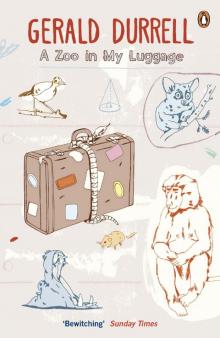 A Zoo in My Luggage
A Zoo in My Luggage The New Noah
The New Noah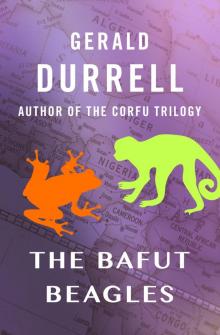 The Bafut Beagles
The Bafut Beagles Encounters With Animals
Encounters With Animals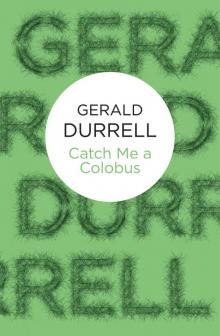 Catch Me a Colobus
Catch Me a Colobus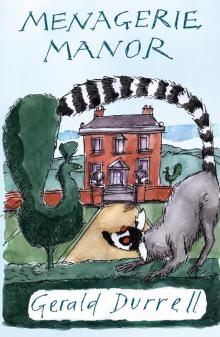 Menagerie Manor
Menagerie Manor The Picnic and Suchlike Pandemonium
The Picnic and Suchlike Pandemonium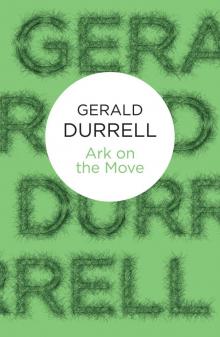 Ark on the Move
Ark on the Move My Family and Other Animals
My Family and Other Animals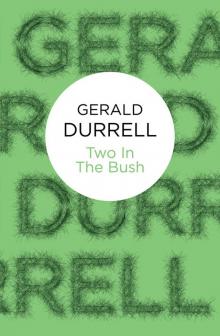 Two in the Bush (Bello)
Two in the Bush (Bello)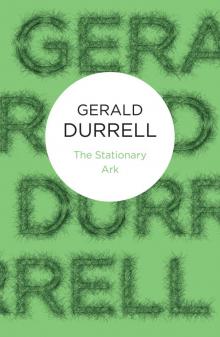 The Stationary Ark
The Stationary Ark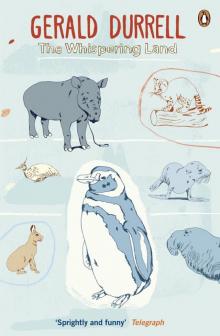 The Whispering Land
The Whispering Land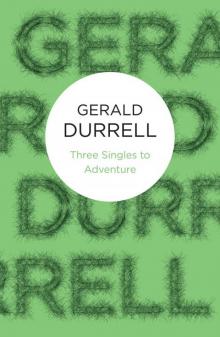 Three Singles to Adventure
Three Singles to Adventure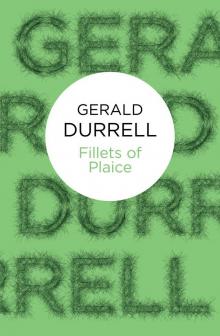 Fillets of Plaice
Fillets of Plaice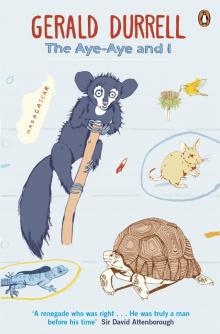 The Aye-Aye and I
The Aye-Aye and I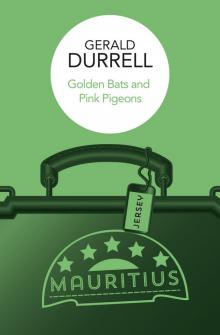 Golden Bats & Pink Pigeons
Golden Bats & Pink Pigeons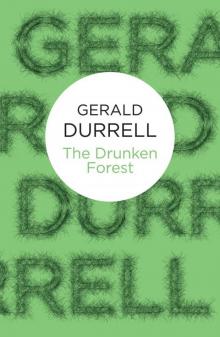 The Drunken Forest
The Drunken Forest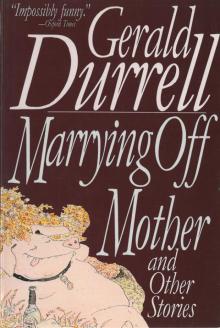 Marrying Off Mother: And Other Stories
Marrying Off Mother: And Other Stories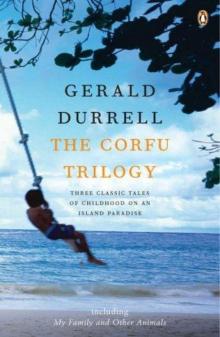 The Corfu Trilogy (the corfu trilogy)
The Corfu Trilogy (the corfu trilogy)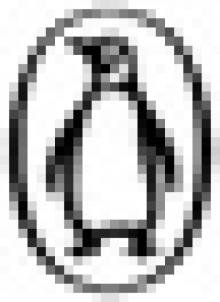 The Corfu Trilogy
The Corfu Trilogy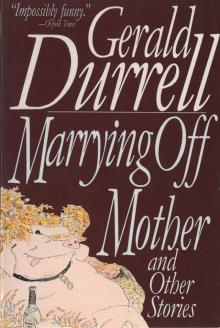 Marrying Off Mother
Marrying Off Mother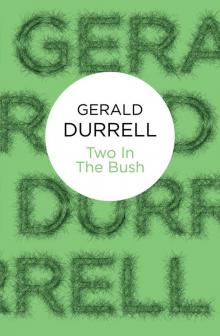 Two in the Bush
Two in the Bush